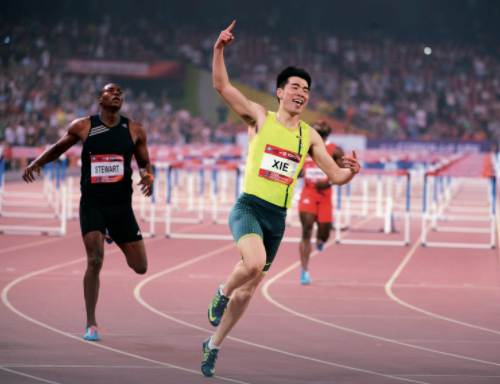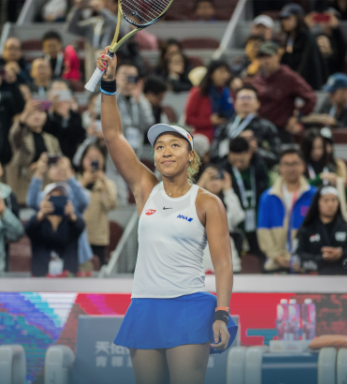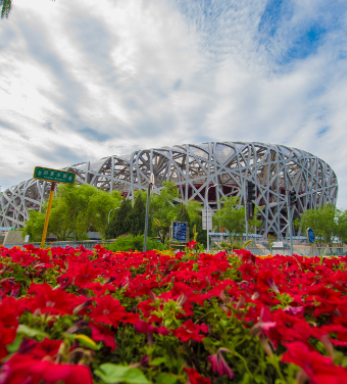
National Stadium (Bird Nest)

National Speed Skating Stadium (Ice Ribbon)
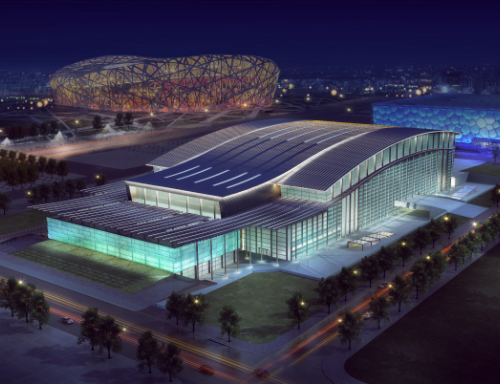
National Indoor Stadium
National Olympic Sports Centre
The Olympic Green, located between the North Fourth Ring Road and North Fifth Ring Road in Chaoyang District, is the core zone of the 2008 Beijing Olympic Games and 2022 Winter Olympics. It is the world's first "Double Olympics Park". By the end of 2019, the Olympic Green has received more than 500 million tourists from home and abroad. More than 320 competitions and performances have been held in the National Stadium (Bird’s Nest). The National Aquatics Centre (The Water Cube) has received over 20 million tourists by holding swimming and diving competitions, as well as other large-scale events.
The National Aquatics Centre (The "Water Cube")
The National Aquatics Centre will be used as the venue for curling and wheelchair curling competitions during the 2022 Winter Olympic and Paralympic Games.
The renovation project has been completed now and the second "water-to-ice conversion" was completed on December 21, 2020.
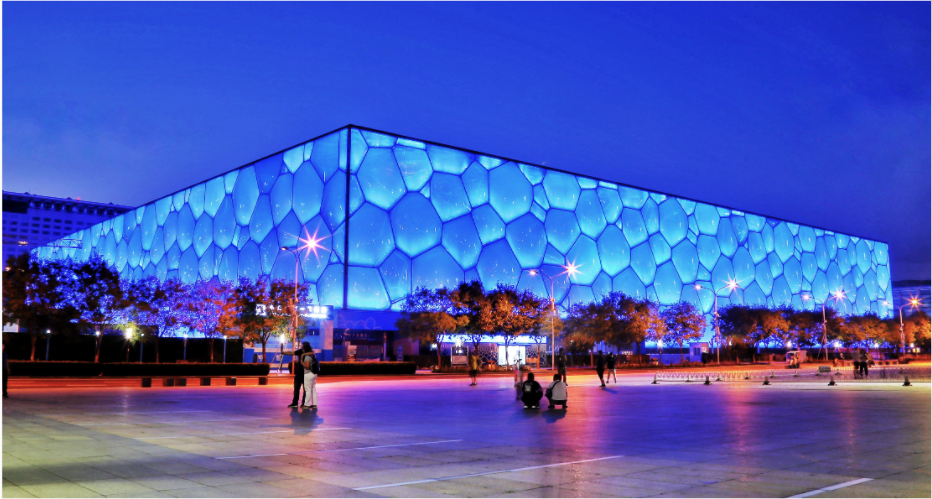
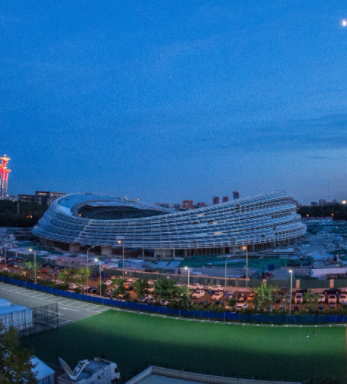
The National Speed Skating Oval (The "Ice Ribbon")
As the only new-built competition venue for ice competitions in the Beijing Winter Olympics, the National Speed Skating Oval has been completed by the end of 2020. It has become the first major task of the venue in 2021 to test the world's largest carbon dioxide ice-making equipment for stadiums and produce the largest ice surface in Asia with an area of 12,000 square metres.
It has a curved curtain wall system made of 22 ribbon-shape curved glass, so it is also known as "Ice Ribbon". It adopts full ice design, making it the largest ice surface in Asia at present. It is also the world’s largest ice surface using carbon dioxide transcritical direct cooling ice-making technology. The venue covers an area of about 80,000 square metres and is 33 metres high. It can accommodate about 12,000 spectators.

Beijing 2022 Winter Olympic Village
Beijing Winter Olympic Village has been completed and will be used as the residence zone during the Winter Olympic and Paralympic Games, providing residential services for athletes and team officials from all countries. After the games, it will provide public rental houses for talents in Beijing, which is suitable for those who have no house in Beijing and is in line with the strategic positioning of the capital city.

THE NATIONAL INDOOR STADIUM
A place to ignite your passion in the Winter Olympics
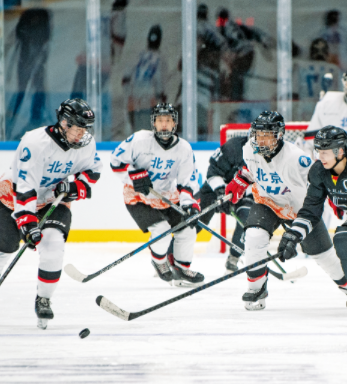
The National Indoor Stadium is one of the three main venues of the 2008 Beijing Olympic Games and stands as the largest indoor multi-functional stadium in Asia. It was the competition venue for gymnastics, trampoline and handball during the Summer Olympics and wheelchair basketball during the Paralympics in 2008. During the Beijing Olympics, the National Indoor Stadium witnessed the most gold medals (14 gold medals in total) won by the Chinese delegation — 9 in gymnastics and 2 in trampoline, thus gaining the reputation of Blessed Land and Golden Nest.
The National Indoor Stadium has undergone a two-years renovation to become a functional competition venue for the Winter Olympics with a total area of about 98,000 square metres. Functions have been added to the main venue and a new ice hockey training hall is erect on the north side. It deserves the reputation of the "Venue for Double Olympics".
As a world-class competition venue, the National Indoor Stadium has considered every aspect to upgrade the overall viewing environment. Unique lighting system, panoramic curved bucket screen and other supporting facilities will create an excellent experience for athletes and spectators.
A curved screen system is installed in the centre of the venue to enhance the atmosphere of the event and bring the best viewing experience for the audience. Its installation is made possible because of the structural load-bearing of the stadium as well as the roof hanging load requirements of the Winter Olympics and post-Olympic events. Such a system consists of four super large LED screens with a height of 4.5 metres and a width of 8 metres each and four small screens with a width of 2.5 metres and a height of 1.5 metres each specifically embedded inside. Such a design creates a panoramic and clear view and facilitates judges and athletes to check game information on screen in time. The screen system is also designed for sustainable use, not only providing a better sight experience during the competition but becoming an essential facility after the Olympics. As of now, it has been Asia's largest curved HD screen of world-class quality.

The lighting system in the stadium venue is uniquely customized. While 120 light fittings were installed for games, an additional 44 fittings were added, increasing over 10 lighting modes for sports events in the venue. Furthermore, the venue lighting system not only satisfies the basic needs of illumination but applies to light shows to create a competitive atmosphere. It varies with the rhythm of music and enhances 3D effect. The lighting system is sufficient for the ice hockey games and broadcasting during the Winter Olympics and is going to be utilized in a sustainable way to be prepared for the post-game operation.
With the advent of the 5G era as well as the progress of 3D visual display technology, video technology has developed from “clarity” to “reality”, characterized by the UHD and immersive VR era. The Beijing Winter Olympics is also an excellent opportunity to show new video technologies. A video showing the “free view” sparked a journalist’s interest. The 210-metre camera array with 40 cameras reconstruct the hockey games in 3D and produce exciting clips of any length and at any frame rate based on the model. This display clip is 10s in length with a frame rate of 60fps. Its effect is equivalent to the shooting of 600 cameras at the same time on the spot.
In addition, viewers can choose to watch the Beijing Winter Olympics ice hockey games from a distinctive visual angle through VR glasses.
To establish an interactive and multi-dimensional viewing experience system, the project team has made breakthroughs in key technologies of VR video and free-view video capture, generation, representation, coding, transmission and display based on independent research and development with national and international standards duly formed. The technologies are going to be demonstrated in and applied to the ice and snow events of the Beijing Winter Olympics, thus propelling the development of the UHD and VR industries.
As the world’s top event, the ice hockey games of Winter Olympics takes place in venues of very high standards. To make the ice surface quality meet the Olympic standards, the National Indoor Stadium selected the most experienced ice-making team in China. With the collaboration of all parties, two ice-hockey surfaces were constructed, one for the official Winter Olympics and the other for pre-game training and warm-up. The two ice arenas can be transformed into multi sizes and modes suitable for the Winter Olympics and NHL events (60m x 26m) as well as other events (60m x 30m) like mass ice activities, figure skating, daily training, and various ice games. The ice surface is in sound condition and the refrigeration unit runs well in the National Indoor Stadium. Its quality has been approved by Don Moffatt, the main ice maker and ice-making expert from the US.
Supporting facilities are considerately designed to provide athletes with a convenient and comfortable environment and meet their needs of training and competition. 14 team locker rooms have been built, each with independent rooms for sharpening, storage, massage and coaching. In addition, separate toilet and shower rooms have been built. The athlete-centred concept was fully implemented during the construction and the functional areas were holistically planned. The locker rooms are located between the competition venue and the training arena to minimize athletes’ walking distance, which is the shortest among all world-class ice hockey venues.
